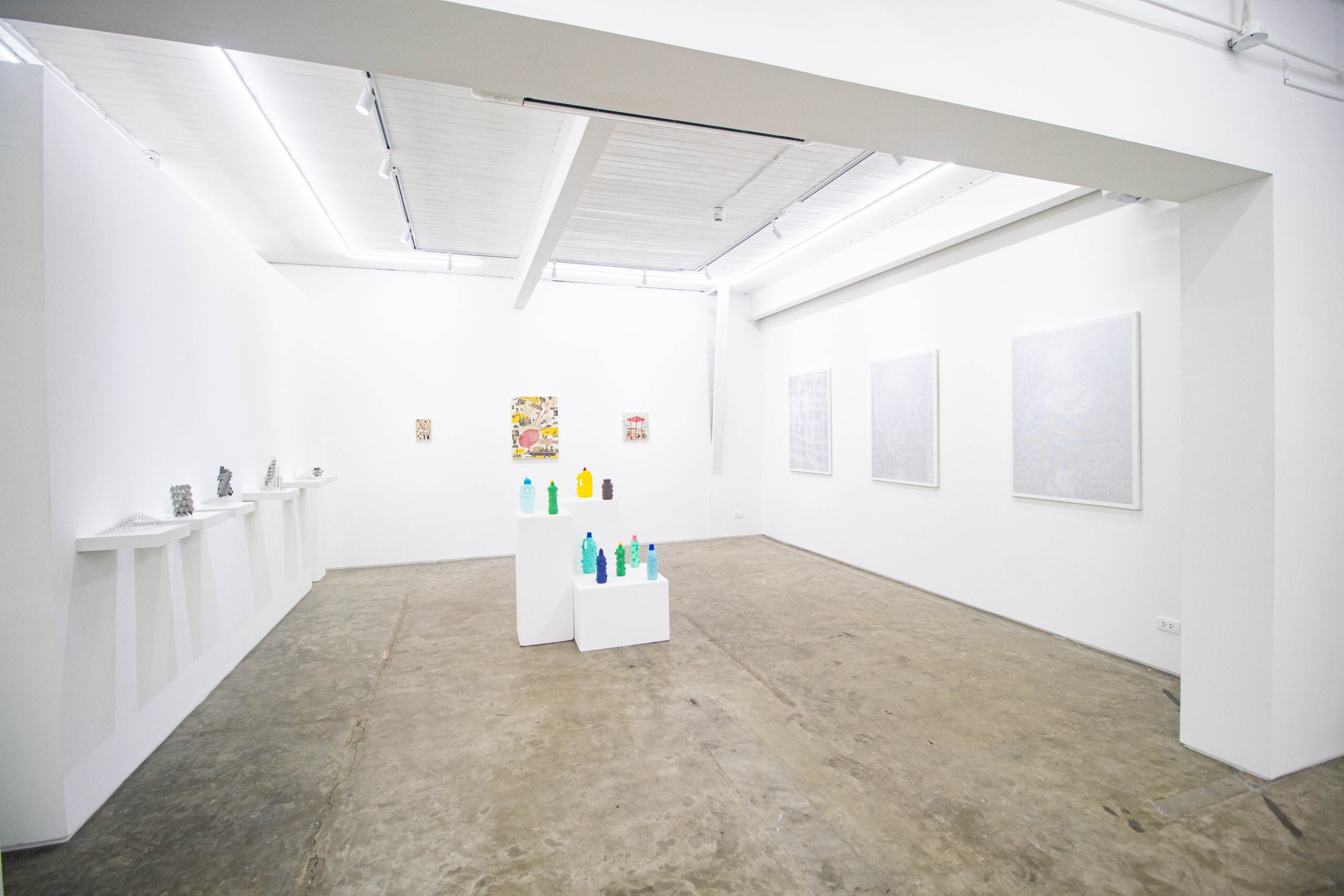In Art as Ownerless Objects, many of the objects Yugo Isaji creates are made using common consumer goods and daily-use products from everyday life. At first glance, his works could be mistaken for bricolage (appropriation or “borrowing”), the humanistic structuralism identified by Claude Lévi-Strauss. In the artist’s case though, the materials aren’t given some newly-appropriated meaning. His fingerprints don’t get all over the object during the creative process, thereby maintaining their original meaning as daily-use objects. – Satoshi Nakashima, Art Anthropologist
“The painting makes absolute value disappear, absolute purpose disappear, absolute meaning disappear.” The paintings in Thus Spoke Iconoclast, at first seems to be there in silence. The colour does not speak out at all, and depending on where the light hits, sometimes nothing iconic appears. Notably, the figures in TERASAWA’s paintings are all formed by silver lines, from soft to strong brushstrokes. Using detailed, deeply considered technique, he deliberately attacks icons of art history; in a sense TERASAWA can be said that he is a contemporary, successor of an Iconoclast. – Erika Chitanda, Philosopher
“I’m living in an old Japanese house in a rural area in Japan. The age of the house is estimated around 100-130 years. A few months ago, I found things that a previous resident left behind. They are old dishes wrapped with newspapers from 51 years ago. This time I used this newspaper in 1973 for my collage painting. I saw the word ‘How wonderful, Life is’ 「素晴らしき哉、人生」 in the ads of a car in the newspaper. I felt the time passing and human’s happiness and materialism of 51 years ago in Japan. Times have changed. In the old house I felt the nostalgia and what has changed and what hasn’t changed about humans.” – Atsuko Yamagata
Check out our catalogue.

